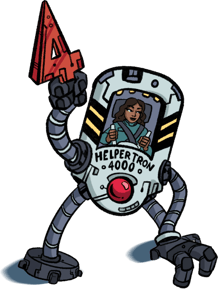Whew — all those pre-reqs, experience hours, and applications finally paid off — congrats on that well-earned acceptance! You are officially on your way to becoming a Physician Assistant—an exciting (though maybe slightly overwhelming) time. Just know that you don’t need to go it alone. Here’s our top 5 Sketchy tips for making the most of your PA school experience and staying on top of your studies.
 Find your resources
Find your resources
There are lots of resources out there when it comes to all the content you’ll need to study for PA school. But first of all, focus on the syllabi, powerpoints and materials your professors provide, they’ll give you a good clue to the depth and breadth of what you need to know. Ask PA students the year above you for recommendations (and we don’t mean the cheapest best pizza place—though that too). Beyond the school generated resources, there are stacks of textbooks, review books, question banks, and other learning resources. Here at Sketchy we combine the best of all worlds with carefully created lessons chock full of “sticky” memory links to help you remember all the minutiae that you need to succeed on your exams and clinical rotations. Each video lesson is paired with a review card to help you review and test yourself, along with multiple choice quiz questions to further challenge your memory and reinforce the material. Many of our PA students report watching the lessons prior to class to familiarize themselves with the material, and then review the review card right after class to consolidate the knowledge. Around test time, the review cards are key to quickly recall the material and make sure it sticks so you can confidently select the correct answer and move on.
Find your system
To keep all the content straight, you are going to need to find your system in PA school. Figure out what works best for you as far as organizing your time and your materials. Sure sticky notes are great, but there’s only so much wall space in a tiny studio with a Murphy bed and garage door. Kidding, we’ve never lived in such a place. However, many PA students do advise keeping different folders (either on their hard drive or on the cloud) for the various powerpoints, notes, home-grown study guides, etc. But hey we know some PA students are still partial to old school paper notes and three-ring binders, and we respect that, but an online organization system allows for a “search” function, which will make your life so much easier when trying to dig out that one obscure powerpoint on pharyngeal arches—who could forget that one!
Speaking of organizing content, it’s not a bad idea to make an “index” of sorts so that you know where to find things. It is useful to index (and link) lecture notes, powerpoints, study sheets, and handy websites so that you know EXACTLY where everything lives. You’ll spend more time studying and learning rather than searching for what you’re looking for. You can even add links to your favorite YouTubes, Sketchy lessons, and other online resources so you can easily find them at the snap—er tap—of a button.
Find your stride
With your study resources and organization settled, it’s time to really plan out your time. We suggest you figure out what time tracking/calendar works best for you, and then stick to it. Schedule in everything you need to do. AND also everything you want to do. In addition to classes and exam schedules, also block off time for sleep, exercise, and hanging with friends. It’s nice to have a calendar that also has these self care items and rewards built in, so it’s not just all studying all the time. You might also pencil in time to swing by the grocery store, you know because that can of baked beans with Ranch dressing just doesn’t taste quite as good the fifth time around. We know, we’ve been there.
Find your circle
 Most of our Sketchy PA students advocate for finding a close circle of study-buddies to study with. Though you might not want to make the circle too big as it can become a challenge to coordinate and focus. Somewhere around 3-4 people is often an ideal size for a study group. This way you have others to bounce questions off, clarify your thoughts, and share materials. Some PA students create their own study guides on a common document to keep concepts clear. Another great tactic is to break up the concepts and “teach” them to each other. This way the work gets divided, while still being fun and interactive. Both the “teacher” and the “learners” learn the material, it’s a win-win!
Most of our Sketchy PA students advocate for finding a close circle of study-buddies to study with. Though you might not want to make the circle too big as it can become a challenge to coordinate and focus. Somewhere around 3-4 people is often an ideal size for a study group. This way you have others to bounce questions off, clarify your thoughts, and share materials. Some PA students create their own study guides on a common document to keep concepts clear. Another great tactic is to break up the concepts and “teach” them to each other. This way the work gets divided, while still being fun and interactive. Both the “teacher” and the “learners” learn the material, it’s a win-win!
Find your passion
Physician Assistants have careers in every aspect of healthcare, from outpatient chronic care, to inpatient acute care settings. And PAs work with every patient population, from newborn to geriatrics. While you may already have a pretty good idea of what interests you when you enter school, keep an open mind and continue to explore what areas light you up. Clinical rotations are a great way to gain exposure to all the different areas, make valuable connections, and think about where you might want to work after graduation. Many programs even offer an elective rotation block to try an additional area of interest. One of the best parts of being a PA is that you can switch between different specialties, so you will never get bored or stuck in one place. Welcome to one of healthcare’s best professions, hang on and enjoy the ride!
